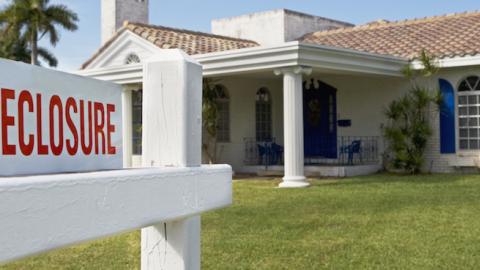In the plethora of polls during the 2016 campaign, the one that got it right was largely ignored: Two-thirds of us think the country is going in the wrong direction. We thought that last fall, and two years ago, and for that matter eight years ago, according to the Real Clear Politics poll average. Most of us have good reason to think the country is going in the wrong direction: The wealth of middle-class families collapsed during the Great Recession, and it hasn’t improved since then.
If wages measure Americans’ daily economic well-being, wealth is what creates Americans’ long-term upward economic mobility. Wealth enables Americans to start a business, send a child to college without hefty loans, buy a better house or car, retire comfortably, and perhaps pass an inheritance to the next generation. Wages pay for groceries and smartphones; wealth reduces economic anxiety. And right now, middle-class Americans should be anxious.
Consider these startling figures from the Federal Reserve’s triennial Survey of Consumer Finances (SCF): In 1989, according to the Fed’s household survey data, the typical middle-class American family had about $88,000 in wealth (measured in current 2016 dollars)—representing the value of everything they owned after subtracting everything they owed. By 2007, despite two recessions, that typical family’s wealth had grown to $140,000. But the Great Recession devastated those numbers. In the 2010 survey, middle-class family wealth had fallen to $85,000. And by 2013, the year of the most recent survey, the average family had lost another $2,000, taking their assets to $83,000. After more than two decades, the typical family in 2013 had less wealth than the typical family in 1989—at the start of George H.W. Bush's presidency.
The Fed’s survey is a unique, comprehensive look at the state of Americans’ assets and debts. Between May and December, trained interviewers ask more than 6,000 families an exhaustive set of questions, and the families themselves provide more than 300 separate pieces of financial data. Their answers reveal that trying to build their wealth is not the only way that middle-class families are falling behind.
Fewer Americans in the middle are working—10% can't find jobs, compared to 5% in 2007. Fewer own a small business, 7% in 2013 compared to 10% in 2007. Fewer families in the middle own stock: 50.1% in 2013, compared to 60% in 2007. And although the stock market has topped 19,000, many middle class families haven’t participated in those gains. Those families in the middle that still own stock own less than they did in 2007: about $33,000 as compared to $42,000 before the start of the Great Recession. Most of this stock is kept in retirement accounts, either IRAs or 401(k)s.
Retirement accounts and housing have been the two most significant investments and wealth-creators for middle-class families since the 1980s, and on the housing front, middle America is also losing ground. Their homeownership rate has dropped, from 89% in 2007 to 82% in 2013. And the equity they have in their homes has fallen by almost half, from $92,000 to $52,000.
The Fed survey results show that in every financial bracket, Americans have been hurt by the Great Recession. But the depth of that hurt has been particularly severe for the middle class. Families in the top 10% saw their average wealth fall from $4.5 million to $4 million, a decline of about 11%. But families in the middle watched their wealth drop by a staggering 40%—that decline being from an average of $140,000 to $83,000. Over the same period, their incomes also fell by 15%, making saving and replenishing harder. As a result, today, the top 10% of Americans control the largest share of the nation’s total household wealth since the SCF began collecting its numbers: 75% versus 71% back in 2007. For the families in the middle, their wealth share has fallen from 2.1% to 1.6%.
As a nation, we are less wealthy than we were before the Great Recession started, and our smaller total wealth is distributed more unequally. The families in the middle have real reason to be concerned about their economic well-being. And a real reason to be angry.















